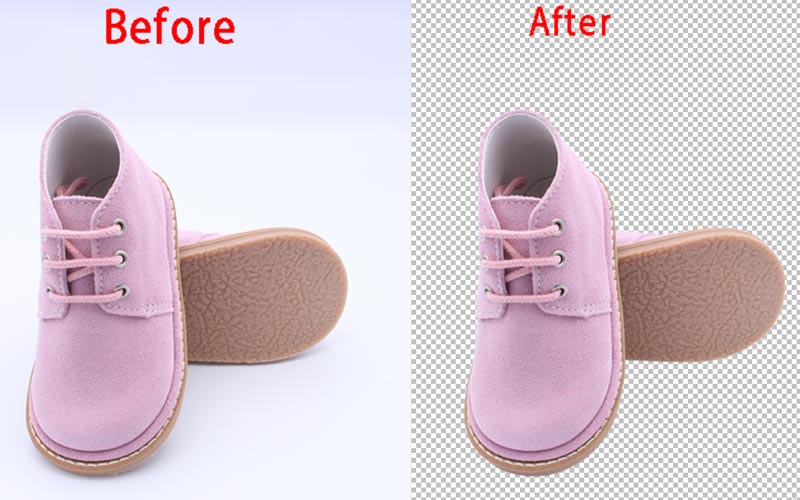E-commerce Image Processing
Price Start from $1.49 or €1.42
E-commerce image processing is the digital magic that transforms product photos into compelling online shopping experiences. It involves editing, cropping, and optimizing images to showcase products in their best light. With it, e-commerce platforms entice customers with visually appealing, persuasive visuals, driving sales in the digital marketplace.

E-commerce Image Processing
E-commerce has revolutionized the way we shop, and at the heart of this digital retail transformation lies a powerful and often underestimated tool: e-commerce image processing. It's the wizardry that turns ordinary product photos into irresistible shopping experiences, capturing attention and driving sales in the ever-evolving world of online retail. In this comprehensive exploration, we'll dive into the fascinating realm of e-commerce image processing, delving into its applications, techniques, impact, and the pivotal role it plays in shaping the digital marketplace.
Understanding the Essence of E-commerce Image Processing: E-commerce image processing, also known as e-commerce image editing, is the practice of digitally enhancing and optimizing product images to create appealing visuals that engage and persuade online shoppers. The primary goal is to present products in their best light, providing customers with a clear, attractive, and informative representation of what they are considering purchasing.
Applications of E-commerce Image Processing: E-commerce image processing finds its applications in various facets of online retail, making it a driving force behind the success of e-commerce platforms. Some key areas where it plays an essential role include: Product Listings: Product images are the lifeblood of e-commerce product listings. They need to be vivid, detailed, and enticing to capture the shopper's attention. Category Pages: Category pages often feature grids of products. Image processing ensures uniformity and consistency in how the products are presented. Featured Products: Highlighting featured products on the homepage or in a dedicated section requires visually appealing images that stand out. Zoom and Hover Features: E-commerce image processing ensures that when customers zoom in or use hover features, they see high-quality, detailed visuals. Product Variations: For products available in multiple colors or styles, image processing helps create images for each variation. Image Thumbnails: Small thumbnails are often the first thing shoppers see. Processing ensures they are clear and attractive, encouraging clicks for more details. Mobile Optimization: E-commerce platforms must optimize images for mobile devices, ensuring they load quickly and display properly.
Techniques for E-commerce Image Processing: E-commerce image processing involves a range of techniques aimed at improving the quality and appeal of product images. Some commonly used methods include: Background Removal: Removing the background from product images allows products to be placed on a clean, uniform backdrop, eliminating distractions. Color Correction: Adjusting colors to match the true representation of products, making them appear appealing and accurate. Image Retouching: Fine-tuning product images by removing imperfections, enhancing textures, and smoothing surfaces to achieve an attractive appearance. Cropping and Resizing: Ensuring product images have consistent dimensions and aspect ratios, making them suitable for various platform displays. Shadow and Reflection Creation: Adding shadows or reflections beneath products for a 3D effect, making items appear grounded and realistic. Image Enhancement: Enhancing image sharpness, contrast, and vibrancy to create visually appealing visuals. Image Optimization: Compressing and optimizing images for faster loading times and better performance on e-commerce websites.
Tools for E-commerce Image Processing: To execute effective e-commerce image processing, a combination of software and hardware tools is essential. Some of the primary tools include: Adobe Photoshop: Adobe Photoshop is the industry standard for image editing and is widely used for e-commerce image processing. Adobe Lightroom: Adobe Lightroom is often employed for batch processing and color correction of product images. Graphic Tablets: Graphic tablets with pressure-sensitive pens provide precision and control for detailed image editing. Batch Processing Software: Batch processing software automates repetitive tasks and allows for the efficient processing of large numbers of images. High-Resolution Monitors: A high-resolution and color-accurate monitor is essential for accurately viewing and editing product images.
The Impact of E-commerce Image Processing: E-commerce image processing is the unsung hero of the online shopping experience, quietly working its magic to influence how shoppers perceive and engage with products. Here are some of the ways it profoundly affects the customer's perception and overall e-commerce experience: First Impressions: Product images are the first thing shoppers see, and high-quality, processed visuals create a positive first impression, setting the stage for the shopping experience. Credibility and Trust: Visually appealing images convey professionalism and credibility, reassuring shoppers that they are dealing with a reputable and trustworthy e-commerce site. Conversion Rate: Attractive product images directly impact conversion rates, as shoppers are more likely to make a purchase when they are presented with visually appealing products. Reduced Returns: Accurate and detailed images help customers better understand products, reducing the likelihood of returns due to unmet expectations. Enhanced User Experience: Image processing ensures that images load quickly and display properly on various devices, providing a smooth user experience. Brand Identity: Consistent, high-quality images contribute to brand identity, making it instantly recognizable and memorable.
Challenges and Considerations: While e-commerce image processing is an essential component of online retail, it comes with its own set of challenges and considerations: Consistency: Maintaining consistent visual styles across thousands of product images can be challenging, especially for large e-commerce platforms. Image Sourcing: Acquiring high-quality source images is crucial, as poor-quality originals can limit the effectiveness of image processing. Volume: E-commerce platforms often deal with a high volume of products, which can be time-consuming to process. Ethical Considerations: While image processing aims to enhance product visuals, there is a fine line between enhancement and misrepresentation, which can lead to ethical concerns.
The Future of E-commerce Image Processing: As technology and e-commerce continue to evolve, the future of e-commerce image processing holds exciting prospects. Some trends and developments to watch for include: Artificial Intelligence (AI): AI-driven image processing will become more prevalent, automating tasks and providing insights into consumer preferences and product performance. Virtual Try-On: E-commerce platforms may incorporate virtual try-on features, allowing customers to virtually try on clothing or accessories before making a purchase. Augmented Reality (AR): AR applications may allow customers to visualize products in their own environments before making a purchase. Sustainability: Sustainable and eco-friendly image processing practices will gain importance as consumers become more environmentally conscious.
In Summary: E-commerce image processing is the backbone of the online shopping experience, shaping how products are presented, perceived, and ultimately purchased. It's the digital alchemy that transforms pixels into profits, enabling e-commerce platforms to engage and delight customers in the visually driven world of online retail. As technology continues to evolve, the influence and potential of e-commerce image processing will only grow, ensuring its enduring relevance in the ever-changing landscape of digital commerce.


